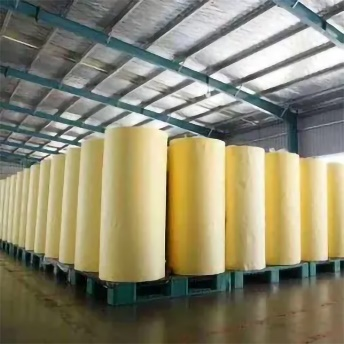Adhesive tape, also known as sticky tape, is a popular household item that has been around for over a century. The history of glues used for adhesive tape is a long and interesting one, tracing the evolution of the materials and technologies used to produce these convenient and versatile products.
The earliest adhesive tapes were made from natural materials, such as tree sap, rubber, and cellulose. In the late 19th century, a new type of adhesive was introduced, based on casein, a protein found in milk. This type of glue was used to make the first masking tapes, which were designed to cover surfaces while they were being painted.
In the early 20th century, pressure-sensitive adhesives were developed, based on natural rubber and other synthetic polymers. These new adhesives had the advantage of being able to stick to a variety of surfaces without the need for heat or moisture. The first pressure-sensitive tape was marketed under the brand name Scotch Tape, and it quickly became popular for a wide range of uses, from wrapping packages to repairing torn paper.
During World War II, advances in synthetic polymers led to the development of new types of adhesives, including polyvinyl acetate (PVA) and acrylate polymers. These materials were stronger and more versatile than their predecessors, and they were used to make the first cellophane tapes and double-sided tapes. In the decades that followed, the development of new adhesives continued at a rapid pace, and today there are many different types of adhesive tapes available, each designed for a specific purpose.
One of the key factors driving the development of adhesives for adhesive tape has been the need for improved performance. For example, some tapes are designed to be waterproof, while others are designed to be resistant to temperature changes. Some adhesives are specifically formulated to stick to difficult surfaces, such as wood or metal, while others are designed to be removed cleanly, without leaving any residue.
In recent years, there has been a growing interest in sustainable adhesives for adhesive tape, as consumers and manufacturers seek to reduce the environmental impact of these products. Many companies are exploring the use of bio-based materials, such as plant-based polymers, and are working to develop more environmentally friendly production processes.
In conclusion, the history of glues for adhesive tape is a fascinating story of technological progress and innovation, reflecting the ongoing efforts of scientists and engineers to create new and improved materials and technologies. Whether you’re taping up a box or fixing a torn piece of paper, the adhesive tape you use is the result of many years of research and development, and it stands as a testament to the power of human ingenuity and creativity.
Post time: Feb-26-2023

